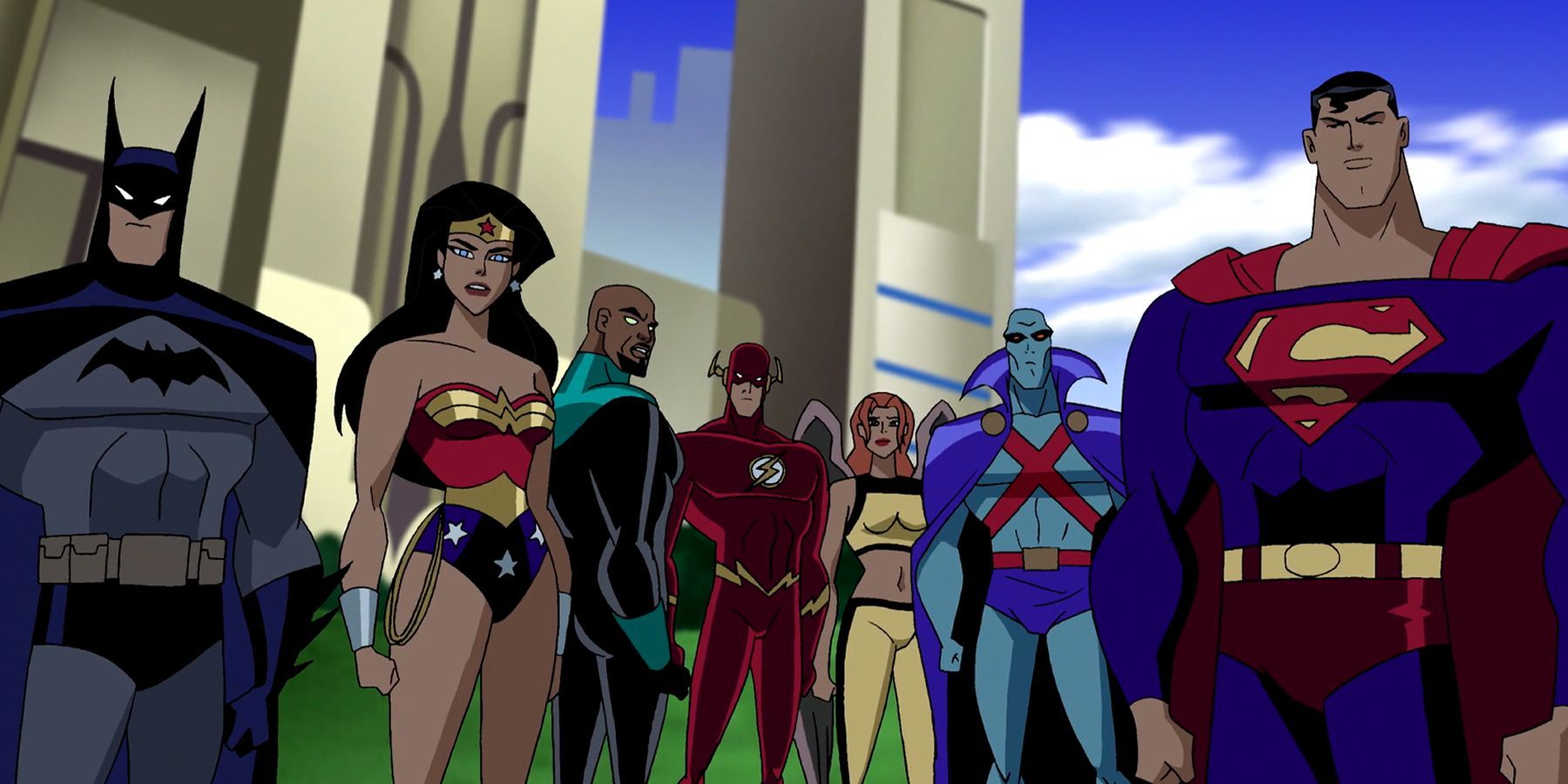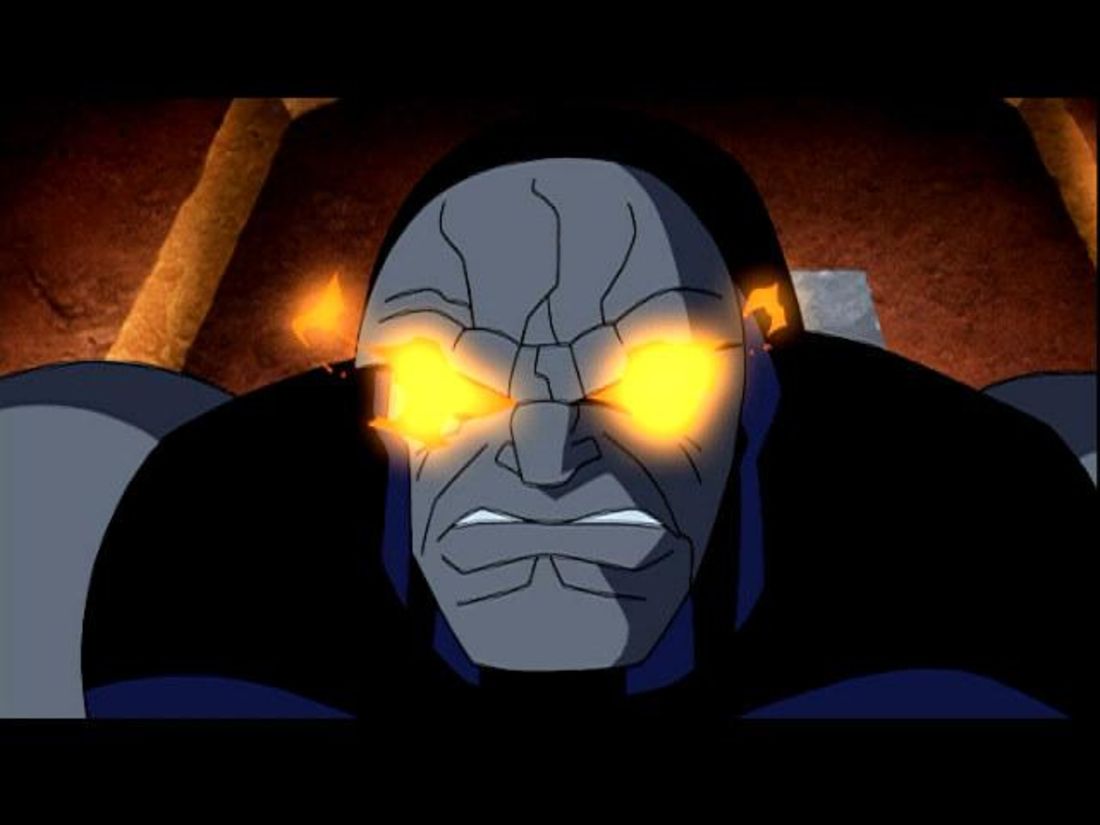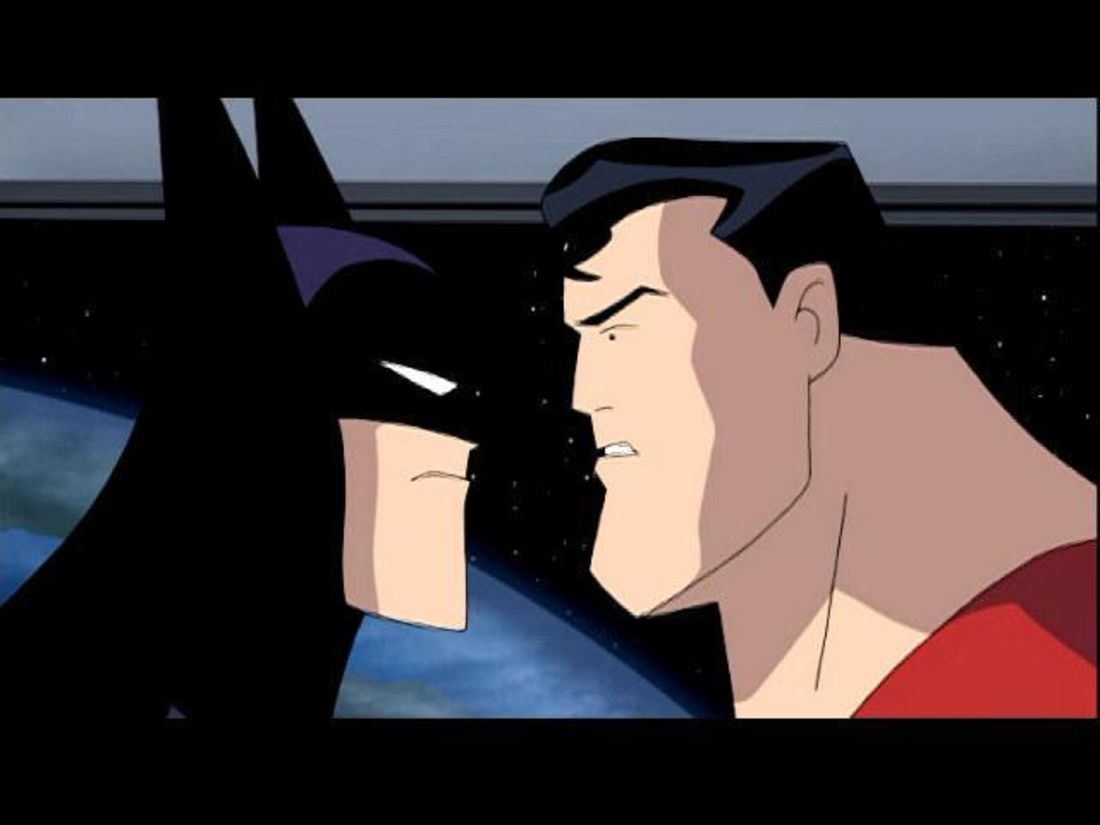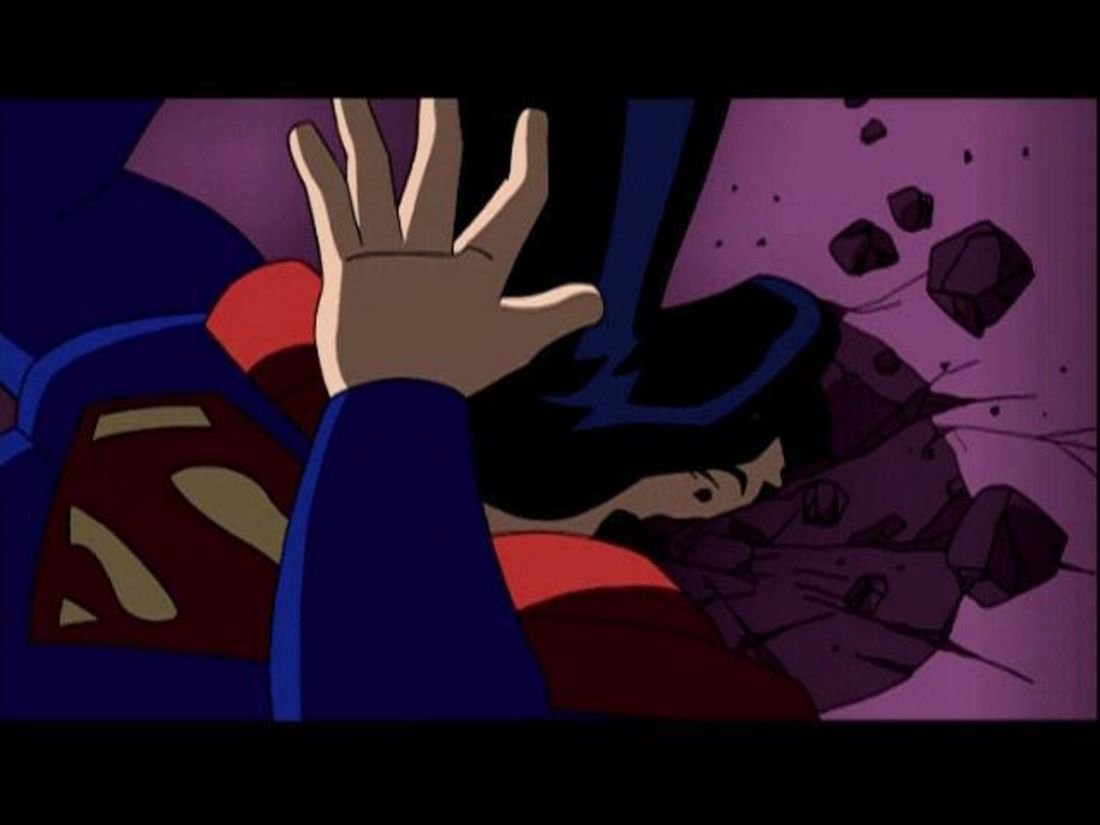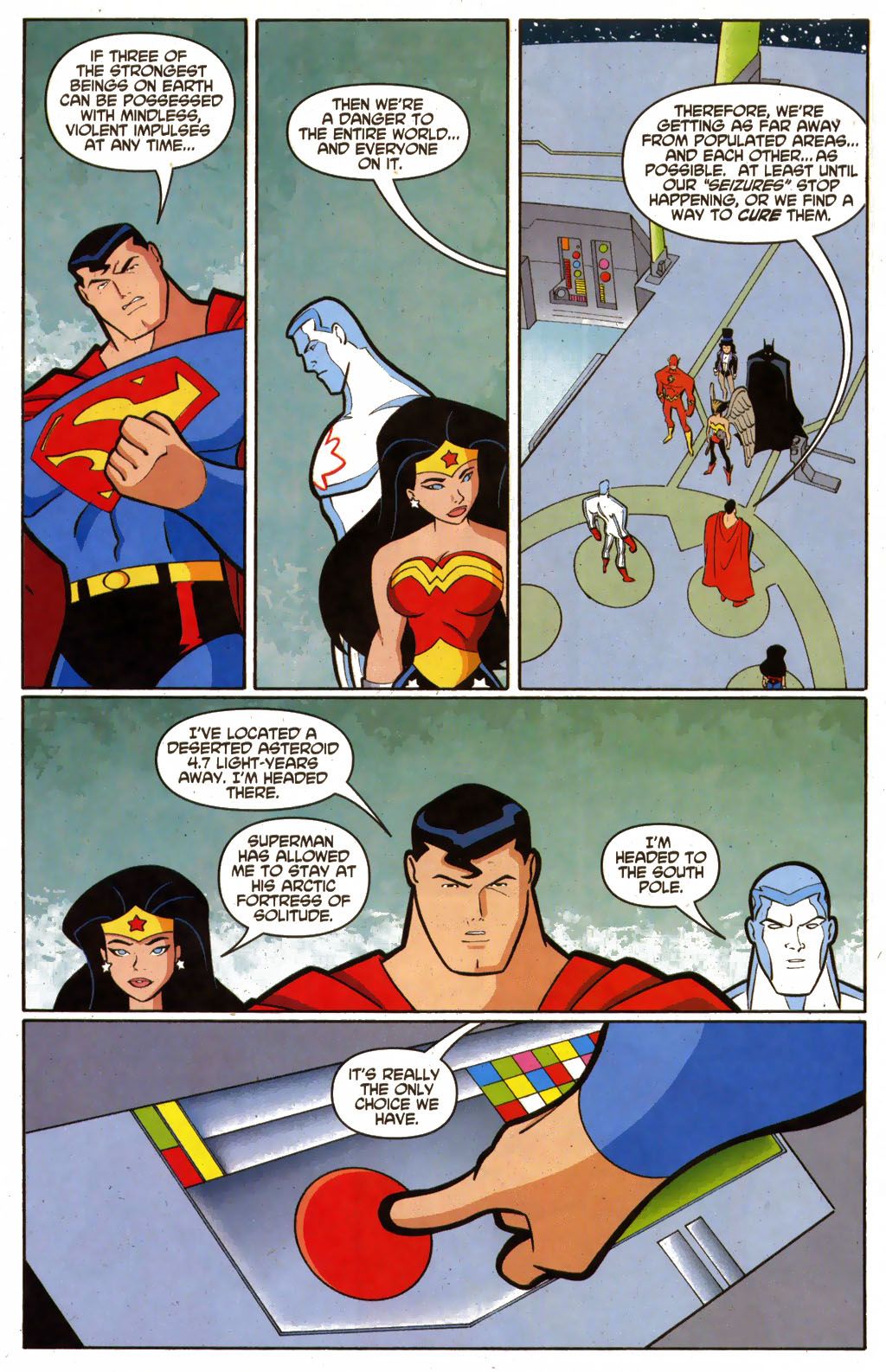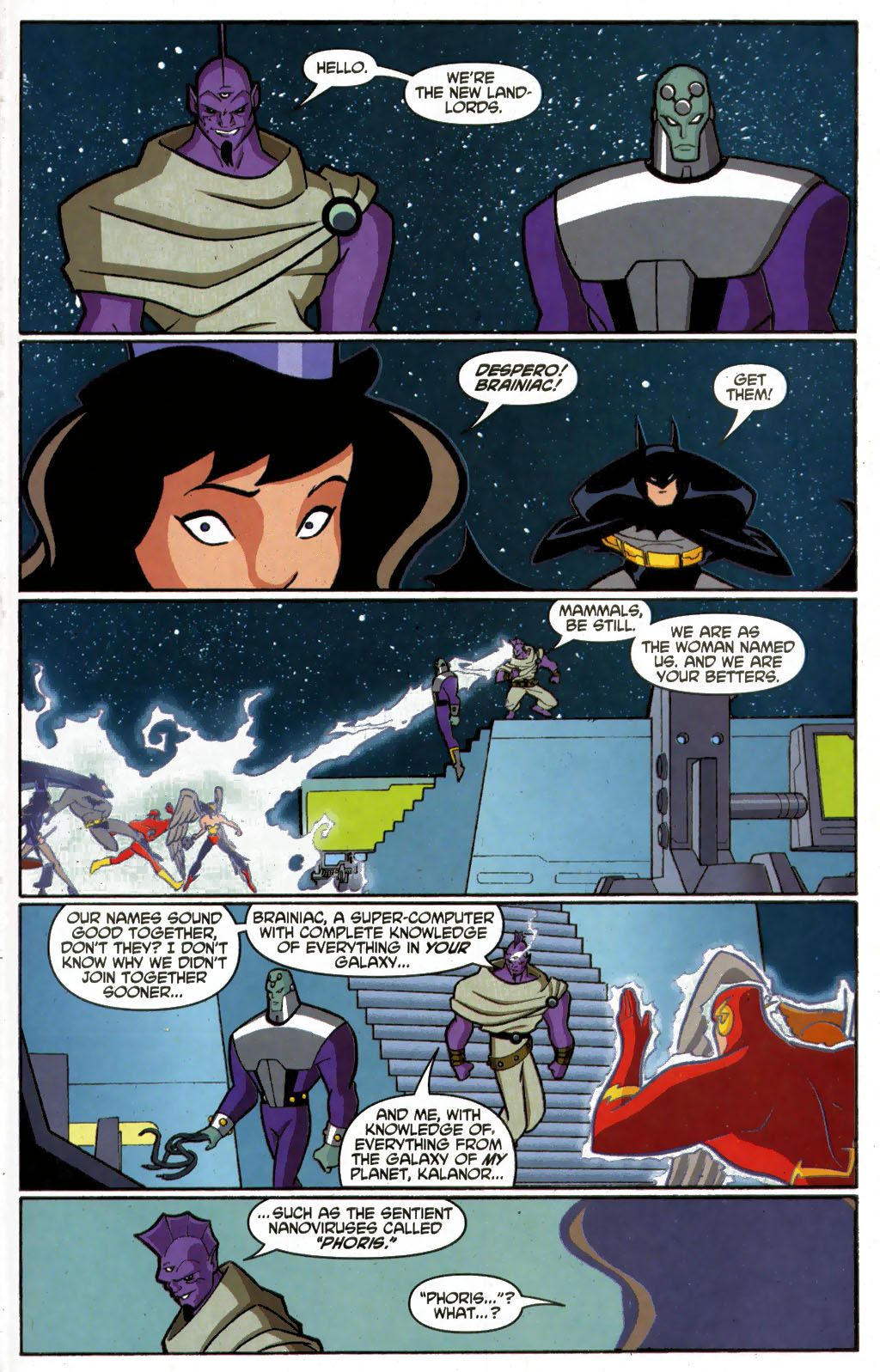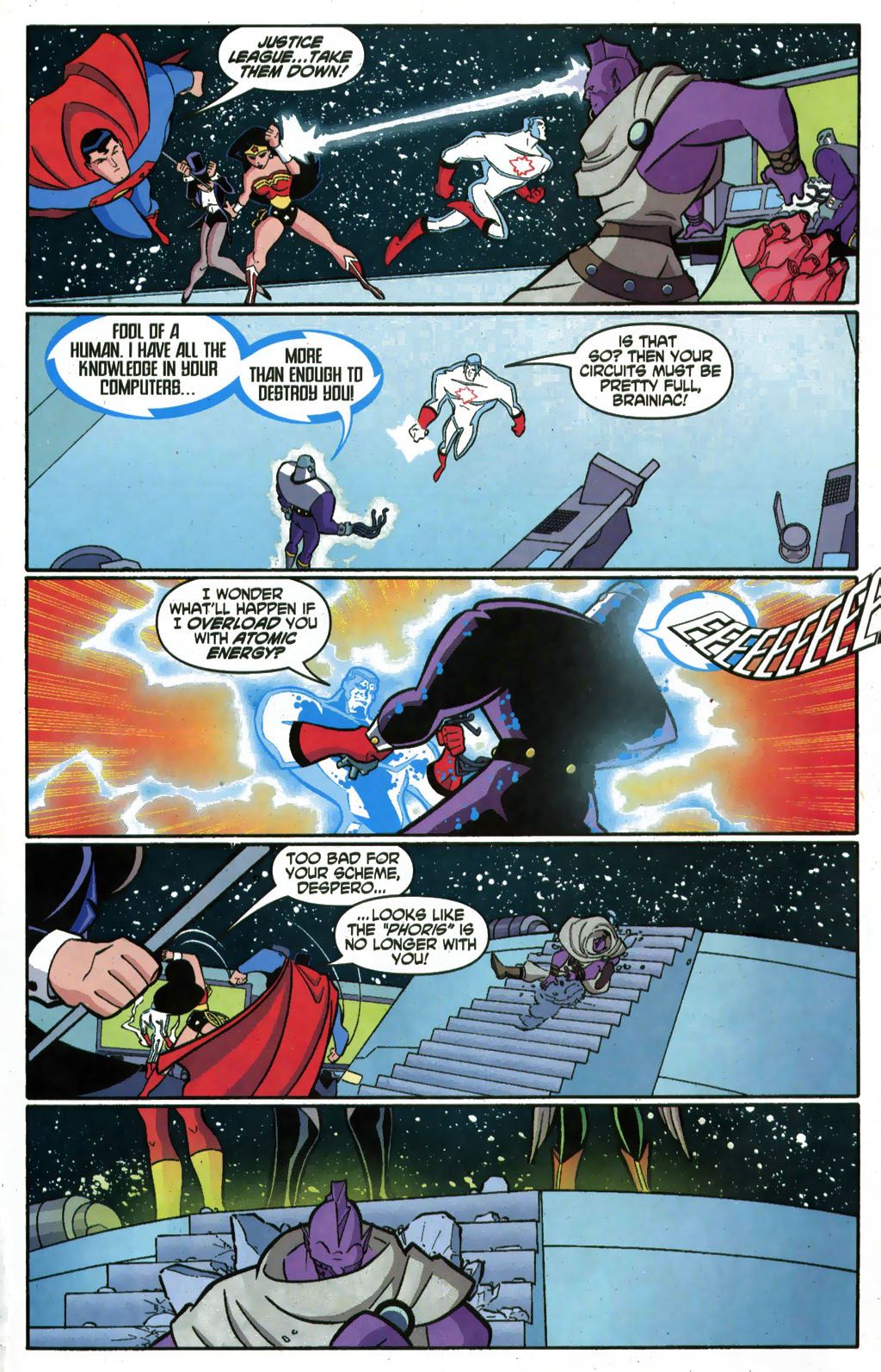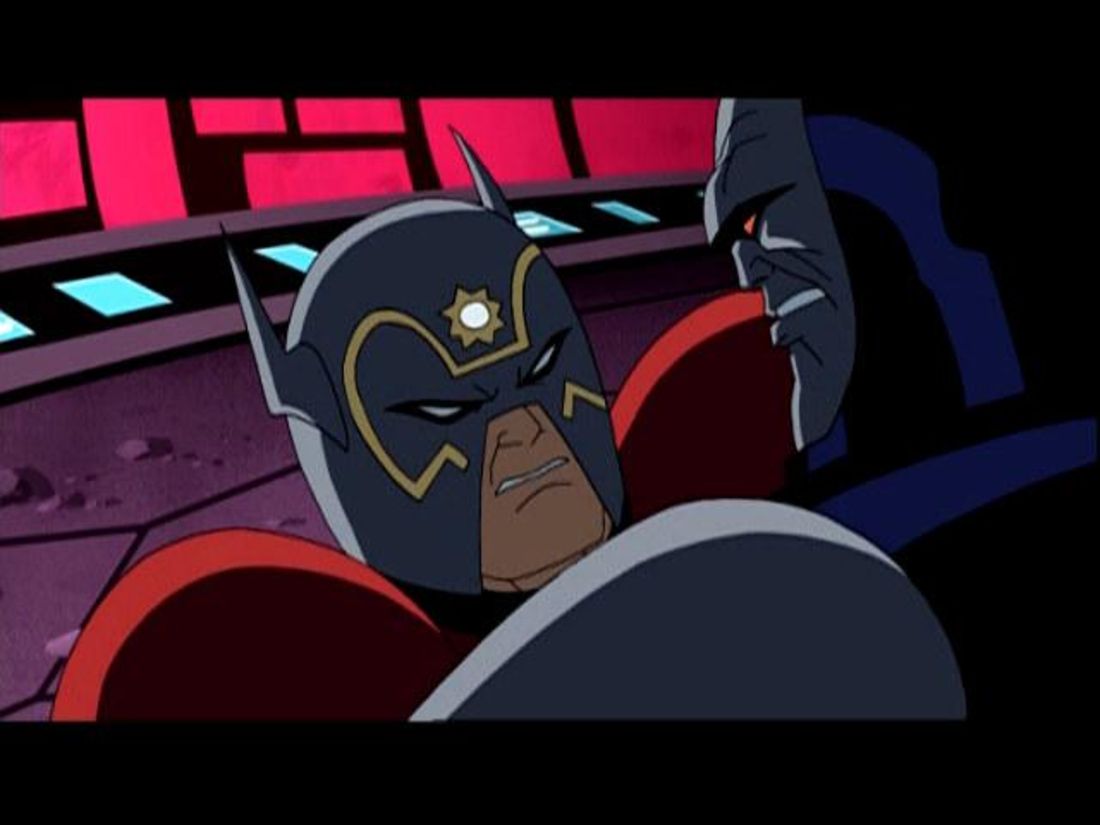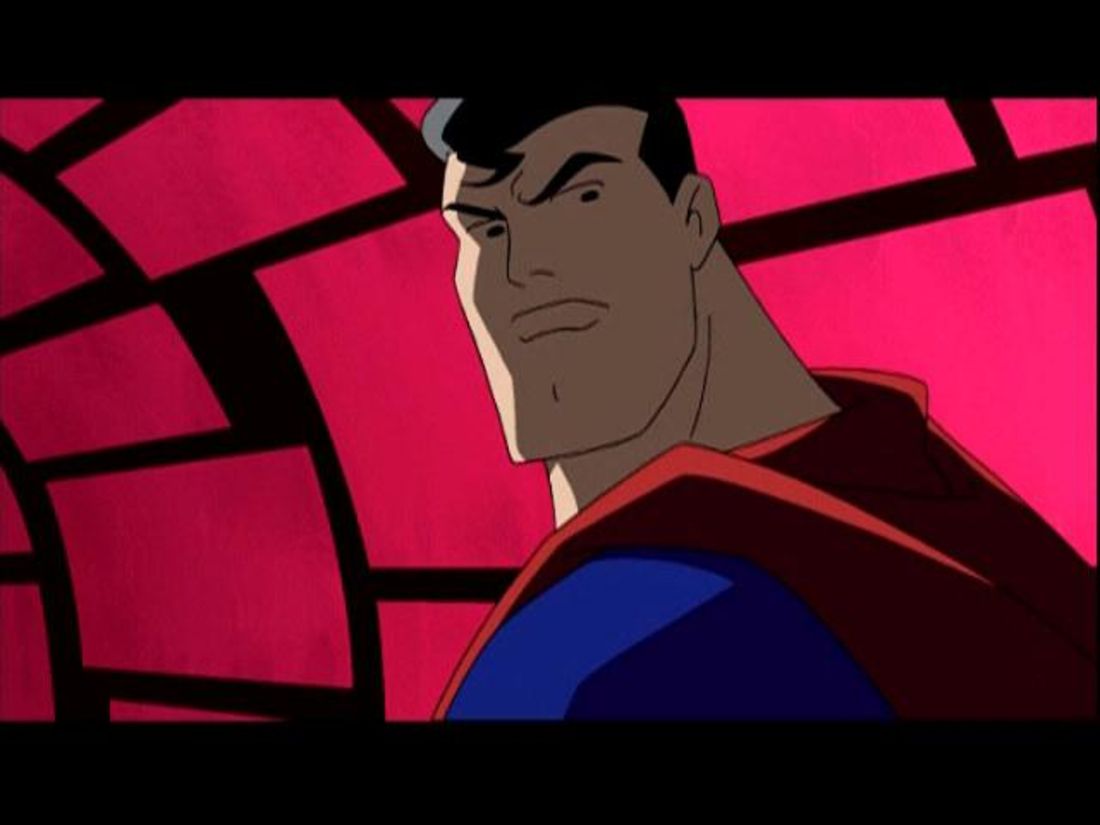Welcome to Adventure(s) Time's 116th installment, a look at animated heroes of the past. This week, two "new start" tales of creators pairing Brainiac with unexpected villains to menace the Justice League. And if you have any suggestions for the future, you can find me on Twitter.
Debuting on July 5, 2003 is "Twilight," the second season premiere of Justice League. Featuring a story from
Rich Fogel and Bruce Timm, and direction from Dan Riba and Butch Lukic, the producers had a specific goal in mind with the two-parter. This was the new direction for Justice League. The first season of the show was highly anticipated, and featured some memorable episodes, but didn't quite have the feel of a DC Animated Universe production. To be blunt, it lacked a certain intensity, leaning too heavily towards younger kids, and often not giving adults enough reason to care.
Another step in reimagining the show was to avoid the "continuity lite" approach of the introductory season. Nothing from the previous DCAU shows was explicitly referenced in the first season, divorcing Justice League from a rich history of well-written, well-received series. "Twilight" hinges on audiences being familiar with several Superman: The Animated Series episodes. These include "Father's Day" and "Apokolips... Now!" (the origin stories for the New Gods characters), "World's Finest" (which established Batman and Superman as less than friendly) and "Legacy" (featuring a brainwashed Superman serving Darkseid, declaring war on Earth and losing the public's trust.)
"Twilight" opens with New Genesis forces catching Darkseid's troops (investigating the mysterious Anti-Life Equation in New Genesis territory) disobeying their treaty. New Genesis' retaliatory assault is severe. Soon, Apokolips faces an unrelated attack by Brainiac. A desperate Darkseid seeks the aid of Superman and the Justice League. Superman, resentful of Darkseid, refuses.
It's Batman who pushes him to help...doing so in a cold, condescending manner. The audio commentary clarifies Batman's playing "bad cop" here, but the underlying tension between the characters feels genuine. Throughout the two-parter, Batman makes more than a few cracks at Superman's expense. Superman, meanwhile, slaps Batman aside like he's nothing when the vigilante stands between him and Darkseid in the story's climax. And even after the day is saved, there's no pat resolution between the two. It's Superman who bluntly tells his teammate in his closing line for the episode: "You know something, Bruce? You're not always right."
If you only knew these characters from Season 1, you'd have to question just what was going on here. For fans of the wider DCAU canon, though, it feels as if Justice League is coming into its own. The plot is complex enough to justify the more mature take on the characters. Batman and Wonder Woman have their own subplot, attempting to recruit New Genesis' aid, while Martian Manhunter and Hawkgirl bond over their lost worlds (setting the stage for the season finale's big Hawkgirl reveal), and numerous twists enable Darkseid to reassert his dominance.
Darkseid, we learn, was luring Superman into Brainiac's trap, in exchange for Brainiac sparing Apokolips. When Brainiac uses Superman's Kryptonian DNA to evolve into a powerful new life-form, Darkseid then double-crosses Brainiac, declaring this new super-being is the solution to the Anti-Life Equation. (A vague plot device going back to Jack Kirby's original comics -- one that remains vague in this canon, although it receives some illumination in subsequent Justice League Unlimited episodes.)
In the midst of a reality-destroying maelstrom, Superman's adamant about finishing Darkseid -- it's up to Batman to save Superman from himself and teleport him away before Brainiac's asteroid explodes. The script's packed with cute, pithy dialogue (likely inspired by Joss Whedon, as Bruce Timm was becoming a Buffy fan in this era.) But perhaps the most memorable line is spoken by a battered Darkseid, witnessing Superman teleport away just before the explosion: "Loser."
Maybe the creative team of the 2004 comic tie-in Justice League Unlimited felt another story featuring a Brainiac supervillain team-up would make their introductory issue something special. "Divide & Conquer" comes from writer Adam Beechen and penciler Carlo Barberi. Like the rest of the run, it's a simple premise that's resolved in one issue.
The hook here is that Superman, Wonder Woman, and Captain Atom (identified as the team's strongest members) are experiencing periodic violent outbursts. Barberi's given some pages to draw the heroes acting out, and it's a nice showcase for his talents. Like Tim Levins before him on Gotham Adventures, Barberi is able to draw upon cartoony influences outside of Bruce Timm's style, while remaining loyal to the DCAU look. Barberi seems influenced by the "chunky" style of superhero art introduced by artists like Joe Madureira and Ed McGuinness.
The "weaker" members of the team attempt to discern what's causing this, while the powerful members choose to, pardon the term, self-isolate in order to protect the planet.
The villains behind the scheme -- Brainiac and his new ally Despero -- hardly waste a second, materializing inside the League's headquarters and attacking the lesser-powered members. They reveal the heroes' erratic behavior was a result of their joint creation, the nanovirus known as "Phoris."
After a brief battle, the big twist is revealed -- the more powerful League members never went away. They'd merely been rendered invisible by Zatanna. From there, we have the big rally fight scene, which has Brainiac dispatched in literally one panel.
And, in closing, the League affirms there's no such thing as a "weak" member. The type of emotional validation the title's young target audience perhaps needs...but a drastically different mood when compared to the dramatics of "Twilight's" closing.
DESIGN-Y
Following criticism from the first season, Superman and Wonder Woman have been redesigned without prominent cheekbone lines.
Bruce Timm also redesigned Darkseid for his first Justice League appearance. The goal was to bring him even closer to his original Jack Kirby design. The extra crags on his face are also a subliminal callback to "Legacy," which ended with Superman searing Darkseid's face with his own Omega beams.
CONTINUITY NOTES
Darkseid's flunkie Desaad makes his final DCAU appearance, after an agitated Darkseid seemingly pops him like a balloon with his Omega beams. Bruce Timm also indicates in the episode's audio commentary that Darkseid breaks Orion's back during their fight in the second chapter. He'll later reappear in four Justice League Unlimited episodes, however.
The Superman episode "Apokolips... Now!, Part II" established Forager as one of the "upper class" New Gods, and not the "bug" we see here. The audio commentary for that episode acknowledges this mistake.
And if you're curious about the vague title for the episode, some cable and satellite guides had it listed as "Twilight of the Gods" instead.
HEY, I KNOW THAT VOICE
The New Gods cast features Michael Dorn as Kalibak, Rene Auberjonois as Desaad and Steppenwolf, Michael Ironside as Darkseid, and Ron Perlman as Orion. Rob Paulsen, famous as the original Raphael on Teenage Mutant Ninja Turtles and Yakko Warner in Animaniacs, makes a rare DCAU appearance as Lightray.
APPROVED BY BROADCAST STANDARDS & PRACTICES
One of the more amusing network restrictions of the show is the insistence that Superman most always wear a seatbelt when riding in the League's vehicles. "Twilight" draws more attention to it, as we have to watch him physically take it off to get out of the craft.
One bit the animators toyed around with, which they knew would never air, was a brief scene of Lois Lane dying during a fantasy sequence after Darkseid takes Superman captive. The network did allow, however, the implied butt-slap Lightray gives Wonder Woman after she arrives on New Genesis. Which, come to think of it, would be far less likely to air today.
"...JUST A GREASY SMEAR ON MY FIST"
Shows retooling after their debut season isn't anything new. Sometimes roles are recast, locations changed, dynamics shifted...rarely does a series stay the course, but just focus on getting better. “‘Good enough’ isn’t good enough” became Bruce Timm's motto for the second season, and it's clear he wasn't kidding around. The backgrounds are imaginative, the action more intense, and character interactions now feel closer to what viewers expect from prime time dramas, not the Cartoon Network.
Complaints from fans -- such as Superman consistently being the first to fall during a fight sequence -- were also addressed, but not in a pandering manner. "No more Super-Wimp" could go anywhere as a story. But crafting a plot that enables Superman to be tough and brooding while also speaking to his character and drawing out new reactions from his teammates...that's how "fan service" can become a true story.
Ironically, as the DCAU became more sophisticated on television, the comics tie-ins moved in the opposite direction. "Divide & Conquer" is one of the better DCAU comics of the era, with a decent premise and strong art, but it lacks most of what's making the shows interesting at this point. A corporate decision to roll the book in with the kid-friendly "Johnny DC" line overlooked the fact that these books were always suitable for kids...while often exploring sophisticated themes and remaining faithful to the mood of the shows. Now that the DCAU comics have returned, however briefly this might be, hopefully the original vision of Adventures will endure.
Hey, my comics-themed novel Black Hat Blues, is now available on Audible! If you follow this link, you can check it out with a free trial!

